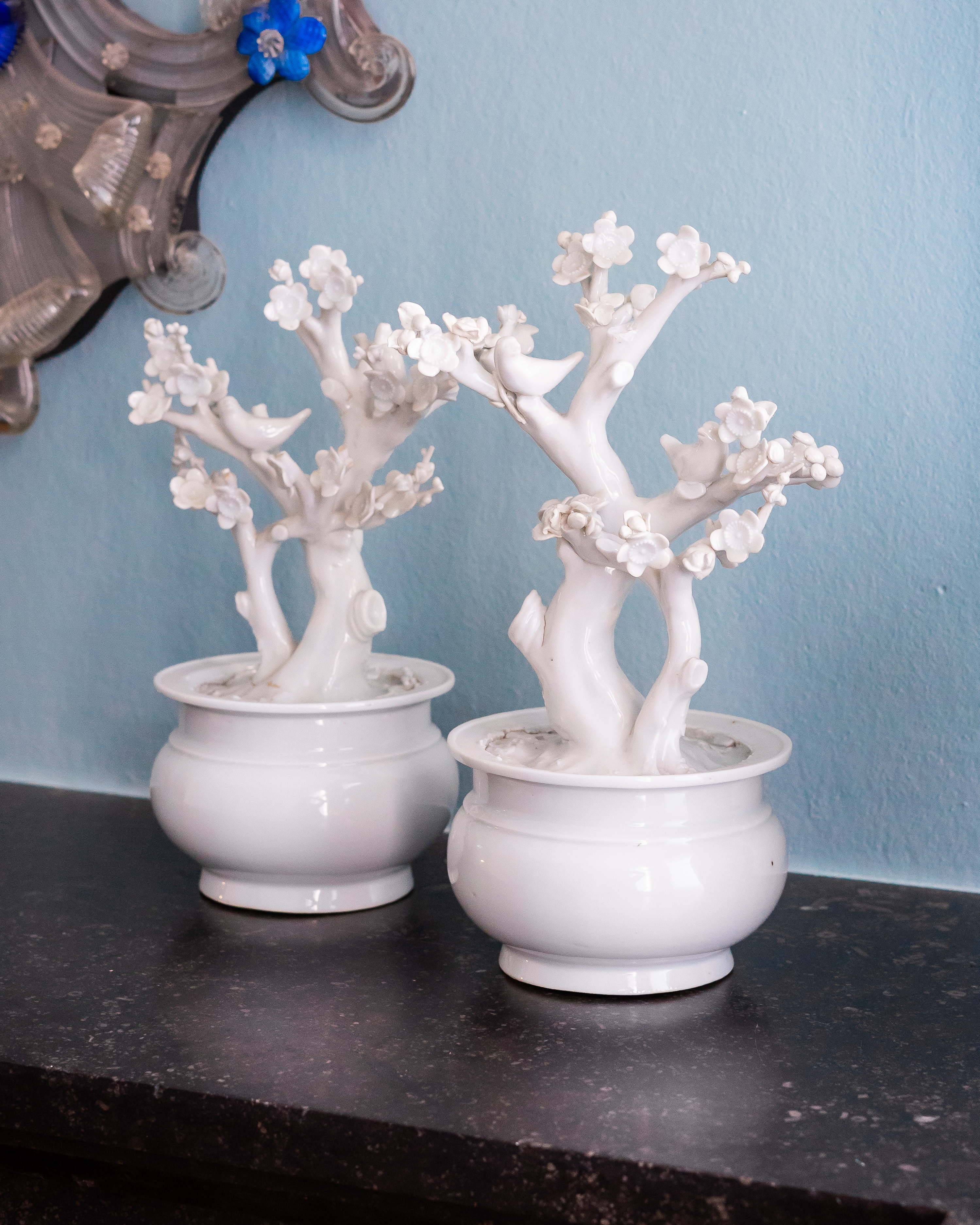Stories: Blanc de Chine
By C.C. (Camille) Verkoulen
Blanc de Chine literally means ‘white from China’. This porcelain is also known as ‘Dehua porcelain’ as it was produced in Dehua, located in the Fujian province (Southeast coast of China). There is no clear start of the production of typical Blanc de Chine pieces. However, we know that in the Song dynasty (960-1127) ‘white’ porcelain was already produced in Dehua but with a more greenish-tinted glaze. In the Ming period (1368-1644), the pieces became more pure white and more typical for what in Europe would be known as Blanc de Chine. In China, white symbolizes respect for ancestors but also death and mourning. Therefore, the subjects of Blanc de Chine pieces often have devotional characteristics.
In general, we could distinguish three categories of Blanc de Chine pieces: figures, objects for the scholar’s desk and domestic wares. The objects for scholar’s desk are typically produced for the Chinese market while the objects from the two other categories are also produced for export to Europe. This pair of plum trees is probably also produced for the European market.
In Europe, they were fascinated about the porcelain of Dehua when it arrived there the first in the 17th century, due to the popularity of Chinoiserie and the unique way of production of the pieces. Important rulers such as August the Strong (1670-1733) and Queen Mary II (1662-1694) were great admirers of Chinese porcelain and Blanc de Chine, making it popular objects among Western upper society. August the Strong had collected over more than 1000 pieces of Blanc de Chine. Even, European factories started creating white porcelain inspired on Blanc de Chine when the Meissen factory funded by August the Strong had found a way to produce porcelain in Europe in 1708.
The popularity of Blanc de Chine continues. Many popular figures such as The Guanyin have been produced over centuries and are still produced in Dehua today.
Source: T. Becker & M. Becker, “Blanc de Chine: The Becker collection”, 2021.
Victorian Albert Museum, “Blanc de Chine: White porcelain from China”, 2020.
